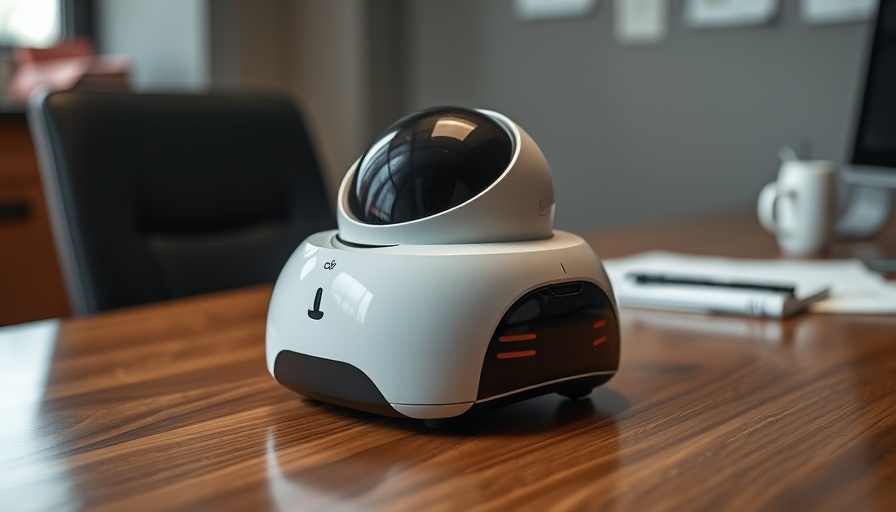
Can a Home Security Robot Replace Indoor Cameras?
As technology progresses, homeowners are constantly seeking innovative solutions to enhance their security measures. Today, the prospect of using a home security robot, such as the Enabot Ebo Air 2, to replace traditional indoor cameras is gaining traction. This compact robot not only patrols your home searching for suspicious activity but also provides companionship to pets left alone. But the question remains: can it truly replace your standard security setup?
Understanding Smart Security Technology
The concept of smart security has evolved dramatically in recent years, driven by advancements in artificial intelligence (AI) and machine learning. Traditional indoor cameras offer static surveillance capabilities, requiring homeowners to check their feeds regularly or to respond to alerts. In contrast, robotic security systems can move throughout the home, providing real-time feedback while monitoring various angles and locations.
This key difference could represent a paradigm shift for home security. The Enabot Ebo Air 2, priced around $200, exemplifies this trend by combining mobility with user-friendly features designed for modern households. As the demand for comprehensive home security solutions rises, understanding how these systems integrate with existing technologies is crucial.
The Features of the Enabot Ebo Air 2
The Enabot Ebo Air 2 boasts a range of features aimed at enhancing home security and pet care. With its built-in camera, it captures video and images, which can be easily accessed through a connected mobile app. This feature allows homeowners to monitor their property remotely, providing peace of mind whether they are at work or on vacation.
Furthermore, the robot can be programmed to patrol at regular intervals, allowing it to cover more ground than a static camera. If it detects movement, it can send instant alerts, enabling homeowners to respond quickly to any potential threats.
Benefits and Considerations for Homeowners
For homeowners considering the transition to a security robot, several benefits stand out. First, the mobility aspect can effectively enhance security coverage. Moving around the house eliminates blind spots that stationary cameras typically suffer from. Second, the dual purpose of the Ebo Air 2 addresses both security and pet management needs, which is particularly attractive for busy professionals or families.
However, some challenges must be acknowledged. For starters, the battery life of these devices may impact their effectiveness, particularly in larger homes. Additionally, reliance on a robotic solution may lead to a false sense of security, as these robots can malfunction or fail to cover all areas of concern effectively.
Comparative Analysis: Robot Security vs. Traditional Cameras
In exploring whether home security robots can truly replace indoor cameras, it's essential to compare the two systems. Traditional cameras are established technology with a history demonstrating their reliability and effectiveness in deterring crime. They are low-maintenance and can be interconnected to offer a comprehensive security solution.
On the other hand, the Enabot Ebo Air 2 and other similar devices represent the future of home security, presenting a dynamic option. However, for maximum security effectiveness, a hybrid model that combines both stationary cameras and mobile robots might provide the best outcomes, capturing the strengths of each technology.
Future Trends in Home Security Technology
Looking forward, the integration of AI and IoT (Internet of Things) into home security systems is expected to redefine surveillance. Manufacturers are likely to enhance robot capabilities with features such as facial recognition and advanced threat detection algorithms. As these technologies converge, homeowners will have access to smarter, more responsive security solutions.
This evolution won't just focus on security; it may integrate with home automation systems, enhancing overall energy efficiency and safety. Homeowners should keep an eye on emerging technologies that will redefine how we think about security and home management.
Conclusion: Is It Worth the Investment?
The appeal of home security robots lies in their innovative approach to surveillance and interaction. While the Enabot Ebo Air 2 offers various advantages, it may not be suitable for everyone as a standalone solution due to potential limitations such as battery life and connectivity issues. As smart security technology continues to advance, it’s essential for homeowners to assess their specific needs, preferences, and how robotic systems integrate with existing security measures.
For those intrigued by the prospect of enhancing their home's security, it may be worthwhile to explore the capabilities of emerging technologies and consider investing in a hybrid security solution that maximizes protection against potential threats.
Call to Action: If you're looking to upgrade your home security system, consider exploring both traditional cameras and innovative robot solutions. Research competitor products to assess which combination will best serve your unique needs and secure your home effectively.
 Add Row
Add Row  Add
Add 



Write A Comment